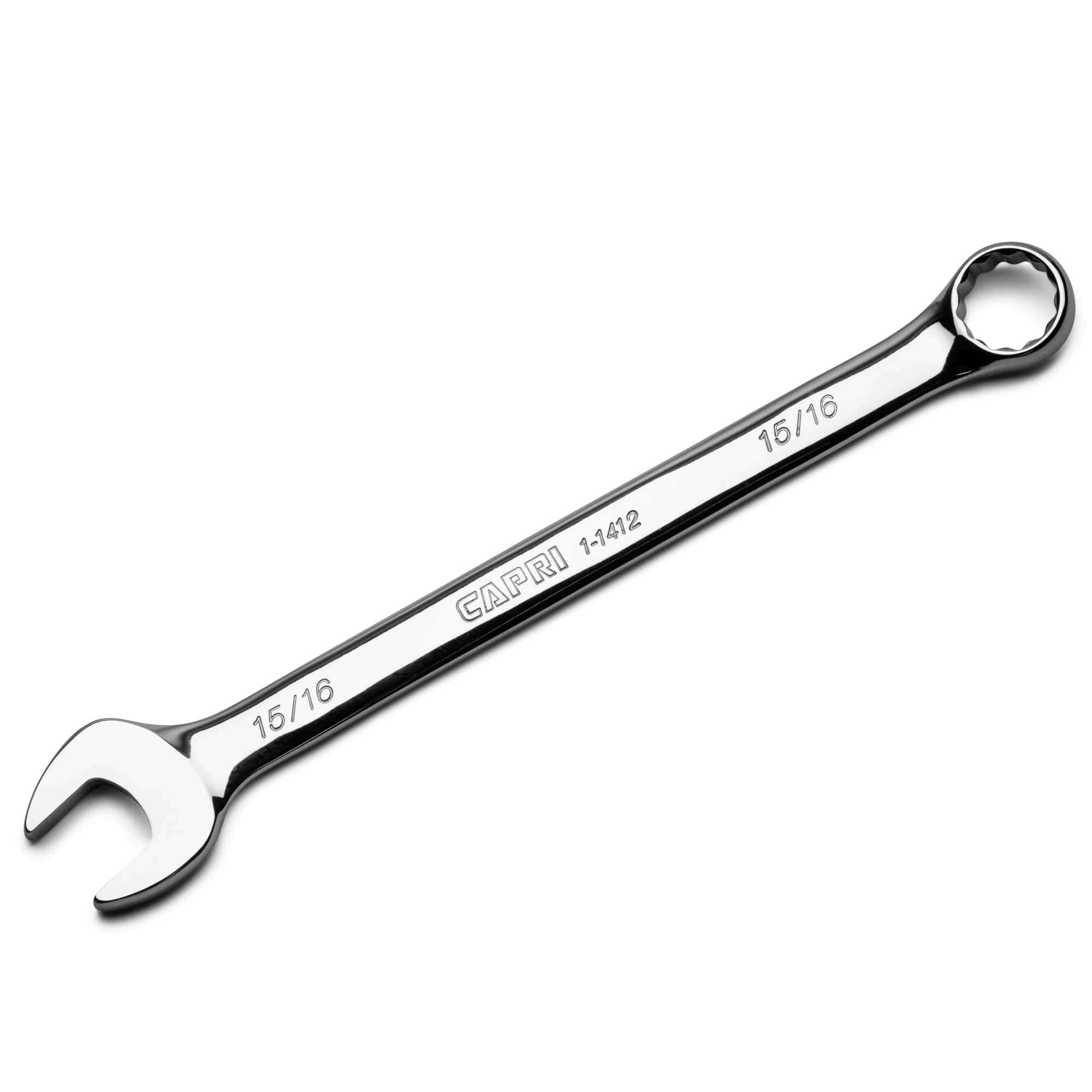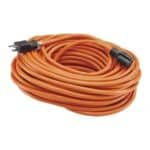A combination wrench is a handy tool for fixing things. It has two ends that do different jobs. One end is open like a U. The other end is closed like a ring. This design lets you use the wrench in tight spots.
Combination wrenches are used to tighten or loosen nuts and bolts. They come in many sizes to fit different nuts. The closed end gives more grip. The open end lets you slip it on and off quickly. This makes work faster and easier.
These wrenches are great for cars bikes and home repairs. You can use them on pipes faucets and furniture too. Having a set of combination wrenches helps you tackle many jobs. They save time and make work smoother.

Design and Types of Combination Wrenches
Combination wrenches come in many shapes and sizes. They have two ends that work in different ways. Let’s look at the main types and how they’re made.
Open-End and Box-End Wrench Features
A combination wrench has an open end and a box end. The open end looks like a U. It fits around nuts and bolts quickly. The box end is a closed loop. It grips all sides of a nut or bolt head.
The open end is good for tight spaces. You can slide it on from the side. The box end is better for loosening stuck bolts. It won’t slip off as easily.
Most combination wrenches are made of chrome vanadium steel. This makes them strong and rust-resistant. The chrome finish helps them clean up easily.
Metric and SAE Size Standards
Wrenches come in two main size systems:
- Metric (measured in millimeters)
- SAE (measured in inches)
Metric sizes are used in most countries. SAE (Society of Automotive Engineers) sizes are common in the US.
A good set of wrenches will have both types. This lets you work on different machines and cars. Metric sizes often go up by 1mm. SAE sizes might jump by 1/16 inch.
Here’s a quick comparison:
| Metric | SAE |
|---|---|
| 8mm | 5/16″ |
| 10mm | 3/8″ |
| 13mm | 1/2″ |
Specialty Wrenches and Their Uses
Some jobs need special wrenches. Here are a few types:
- Allen wrenches: For hex-shaped holes
- Torx wrenches: For star-shaped screws
- Ratchet wrenches: Let you turn nuts without taking off the wrench
- Torque wrenches: Help you tighten bolts to a specific tightness
Line wrenches are good for brake lines and fuel lines. They have a thin opening that fits around pipes.
Adjustable wrenches can change size. They’re handy but not as strong as fixed wrenches.
Specialty wrenches make certain jobs easier. But for most tasks, a regular combination wrench works well.
Practical Applications of Combination Wrenches
Combination wrenches are handy tools for many jobs. They can tighten or loosen nuts and bolts in tight spaces. These wrenches come in different sizes to fit various fasteners.
Automotive Maintenance and Repairs
Car repairs often need combination wrenches. They help fix engines brakes and other parts. You can use them to change oil replace spark plugs or adjust suspensions. The closed end gives more grip for stubborn bolts. The open end works well for quick turns.
Mechanics like these tools because they fit in small spaces. They can reach nuts near hot parts without burning their hands. Some cars need metric sizes while others use SAE. A good set has both types.
These wrenches also help with tire changes. They can loosen lug nuts when you need to swap a flat tire.
Plumbing and Pipe Work
Plumbers use combination wrenches a lot. They’re great for working with pipes and fittings. The tools can tighten or loosen nuts on sinks faucets and toilets.
The open end fits around pipes in tight spots. This helps when you can’t use a pipe wrench. The box end gives more power to turn stubborn fittings.
These wrenches also work well for installing new fixtures. They can adjust pipe connections without scratching the finish. Plumbers often carry sets with many sizes to fit different nuts.
DIY Projects and Home Repairs
Combination wrenches are perfect for home fix-it jobs. They help with building furniture or fixing appliances. You can use them to tighten loose bolts on chairs or tables.
They’re handy for bike repairs too. The different ends help with various parts of the bike. You can adjust the seat post or fix the handlebars.
In the kitchen these tools can fix loose handles on cabinets. They also work well for assembling new appliances or toys. Having a set at home means you’re ready for many DIY tasks.
Professional Use and Craftsmanship
Pros in many fields rely on combination wrenches. Builders use them for steel frame construction. Electricians need them to install boxes and conduits.
Craftsmen like woodworkers use these tools to adjust machinery. They can fine-tune table saws or drill presses. The wrenches help set up jigs and fixtures too.
Aircraft mechanics use special combo wrenches. These tools are often longer for more leverage. They might have special coatings to prevent sparks.
Combo wrenches are also key in manufacturing. They help assemble products on production lines. Their versatility makes them useful in many industries.
Frequently Asked Questions
Combination wrenches are handy tools for many jobs. They work well on nuts and bolts of different sizes. Let’s look at some common questions about these useful tools.
What are the typical applications of a combination wrench in automotive repair?
Combination wrenches are often used to fix cars. They help loosen and tighten nuts and bolts. Mechanics use them for:
- Oil changes
- Brake repairs
- Engine work
- Tire changes
These wrenches fit many sizes of fasteners in cars.
How does a combination wrench differ from an open end wrench?
A combination wrench has two ends. One end is open like a U. The other end is closed in a loop. An open end wrench only has the U-shaped ends.
The closed end of a combo wrench grips nuts better. This helps prevent slipping. The open end is good for tight spots.
What are the advantages of using a ratcheting combination wrench?
Ratcheting combo wrenches save time. They let you turn nuts without removing the wrench. This means:
- Faster work
- Less arm movement
- Easier use in tight spaces
They’re great for jobs with lots of turning.
In what scenarios would you use a combination wrench over an adjustable wrench?
Combination wrenches are better than adjustable wrenches when:
- You need a stronger grip
- The bolt size is known
- Speed is important
- Working in tight spots
They don’t slip as much as adjustable wrenches. This helps prevent damage to nuts and bolts.
Can a combination wrench be effectively used on pipe fittings?
Combo wrenches aren’t the best for pipes. They can damage round pipe fittings. Pipe wrenches are better for this job. They have teeth that grip pipes well.
For some flat spots on pipes, combo wrenches might work. But it’s risky and can harm the pipes.
How does a combination wrench benefit users compared to a box end wrench?
Combo wrenches are more versatile than box end wrenches. They offer:
- Two tools in one
- The open end for quick starts
- The box end for strong grip
This makes them useful for many jobs. You can start with the open end and finish with the box end.







